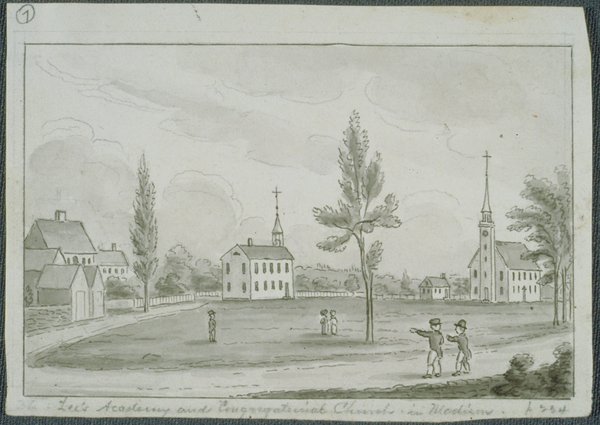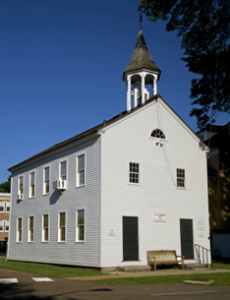By Alex Gerrish
Last Updated: April 17, 2023
For just over two hundred years, Lee’s Academy has been a staple of education in Madison, Connecticut. Initially intended as a private academy for young adults, it served many other educational purposes. As a meeting place for schools, churches, social organizations, and more, Lee’s Academy shaped and inspired countless local citizens within its walls.
Educating the World
Frederick Lee, a merchant mariner and native New Englander, opened Lee’s Academy in 1821. A proponent of education, Lee felt a civic responsibility to offer an institution of higher learning to his community. At the time, public education focused on teaching baseline skills in reading, writing, and arithmetic. These basics were not enough, however, to prepare students for a college education, a path that became increasingly common in the 19th century. Along with traditional foundational courses, many academies also taught a wider range of skills. As they adjusted their curricula to fit the changing needs of their students, academies quickly grew in popularity.
In addition to Lee, several other prominent Madison figures contributed to the creation of the two-story academy—including Dr. Reynold Webb, Rev. David Baldwin, Rev. S. N. Shepard, William Todd, and Professor Samuel Robinson Jr. Initially, as the school’s first principal, Robinson offered four classes—English, math, Greek, and Latin. Tuition for the English class cost $3; the other classes cost $5. Without this academy, students in the area would have needed to find a private tutor or attend other academies. By investing in Lee’s Academy, Madison residents invested in the future of their growing town.
The first class at Lee’s Academy had 82 students. These students—including both boys and girls—came from all over Connecticut, in addition to other places such as New York City, Georgia, and New Orleans. By the academy’s third year, students came from the West Indies, Cuba, and Spain.
Long admired and appreciated for its commitment to education, Lee’s Academy proved a fixture—although a moving one—in Madison’s built environment. This venerable and iconic structure moved five times within Madison. In 1831, the year of Frederick Lee’s death, oxen moved the building from Neck Road to an open roadway west of Madison’s town green. From 1831 onward, it remained on Madison’s town green, although in different spots. Relocating again in 1839 and 1895, Lee’s Academy joined the public school system while Madison’s Daniel Hand Academy was under construction in 1889. By 1892, Lee’s Academy was the property of the town, but continued educating Madison’s students until the early 1900s.
A New Era
In 1922, Lee’s Academy moved to its present location on Meetinghouse Lane. By this time, the building had fallen into disrepair and was in danger of facing demolition. In an effort to save it, the Madison Historical Society (MHS) purchased the building in 1923 for $700. The MHS vowed to restore the building and reclaim its purpose as a community hub for new generations. This ushered in an era when the academy provided a home to many Madison organizations, including the Lutheran Church of Madison, Temple Beth Tikvah, the Boy Scouts, and the Girl Scouts. Lee’s Academy also provided offices for the Red Cross during World War II. Later, Lee’s Academy served as the headquarters of the Madison Public Health Nursing Association and housed the offices of the Connecticut Society for the Prevention of Blindness. In addition, many current Madison residents remember attending preschool and kindergarten in the building while new Madison schools were under construction.
The first two decades of the 21st century continued to be a period of growth for Lee’s Academy. While the upper floor is home to the administrative offices of the MHS, the lower floor operates as its changing exhibit space. A 2019 “Good to Great” renovation grant allowed the historical society to complete yet another restoration project at Lee’s Academy. Slated to reopen as the Madison Center for History & Culture before the town of Madison’s bicentennial celebrations, this historic academy will continue to provide public education and cultural engagement as a portal to the past.
Alex Gerrish is the Programs Manager at the Noah Webster House and holds a B.A. in American Studies from Western New England University.










